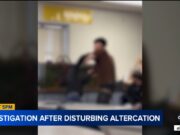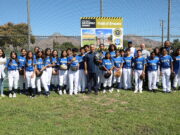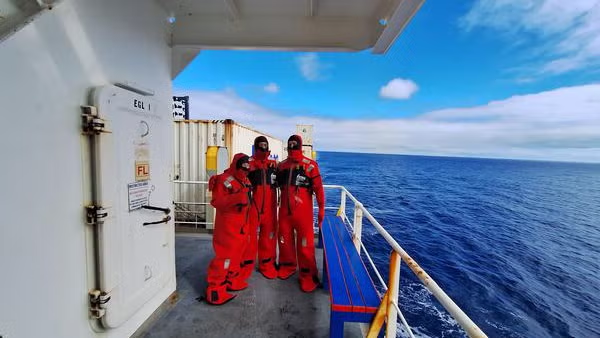Drone to gather pollution samples over the sea
UC Riverside environmental engineers are embarking on a $3.5 million study of air pollution from massive oceangoing vessels that frequent the ports of Los Angeles and Long Beach—one of the region’s largest sources of toxic air pollution.
The 30-month study, funded through legal settlements administered by the Oakland-based Rose Foundation for Communities and the Environment, will be among the most comprehensive efforts to date to track ship emissions and their impacts on neighboring communities, said project leader David Cocker, a professor and chair of the Department of Chemical and Environmental Engineering in UCR’s Bourns College of Engineering.
“This research will help close critical knowledge gaps and give frontline communities and regulatory agencies the information necessary to advocate for public health and shape policies related to port activity,” Cocker said.
Ships delivering goods from Asia and other continents are among the biggest contributors to airborne toxins in Southern California. Their diesel engines emit a toxic mix of soot and other pollutants linked to serious health problems, including impaired lung development in children, elevated cancer risk, and reduced life expectancy.
But ships aren’t the only pollution source near the ports. Los Angeles communities—including San Pedro, Wilmington, Long Beach, and Carson—also contend with emissions from diesel trucks, trains, and cargo-handling equipment, though the ports are transitioning to zero-emission machinery.
Cocker’s team aims to pinpoint the pollution specifically attributable to ships. Using advanced instruments, the researchers will identify and track the unique chemical “fingerprints” emitted from ship smokestacks—complex blends of hundreds of compounds that differentiate one vessel from another.
“We can actually look at the signatures of ships, collect those same signatures in the surrounding community, and match them,” Cocker said. “This gives us a strong foundation for determining how much pollution is coming from oceangoing vessels.”
To accomplish this, the researchers will rely on three major data sources: air samples from land-based monitors in affected neighborhoods, samples taken directly from ship smokestacks, and samples gathered midair by a commercial-grade drone that follows exhaust plumes over the ocean.
A centerpiece of the study, the drone will be equipped with real-time sensors and high-precision air samplers to measure pollutants such as carbon monoxide, sulfur dioxide, nitrogen oxides, and black carbon particles. Some samples will be analyzed immediately using trailer-based labs, while others will be sent to UCR’s College of Engineering Center for Environmental Research and Technology (CE-CERT) for deeper analysis.
The team expects to sample emissions from up to 100 ships within the first year of deployment. Traditional stack testing aboard selected ships will validate drone-collected data and help build a reference library of ship emission profiles. These profiles will then be compared to air samples collected in surrounding communities.
Click here for more information
About UC Riverside
The University of California, Riverside is a doctoral research university, a living laboratory for groundbreaking exploration of issues critical to Inland Southern California, the state and communities around the world. Reflecting California’s diverse culture, UCR’s enrollment is more than 26,000 students. The campus opened a medical school in 2013 and has reached the heart of the Coachella Valley by way of the UCR Palm Desert Center. The campus has an annual impact of more than $2.7 billion on the U.S. economy. To learn more, visit www.ucr.edu.


































